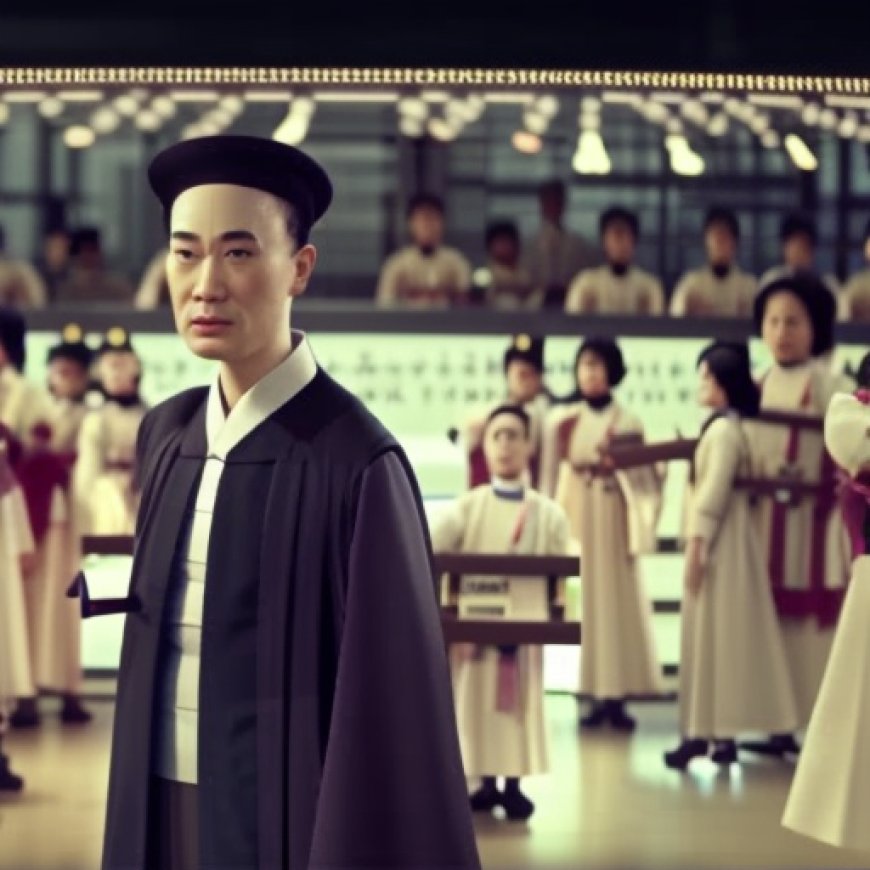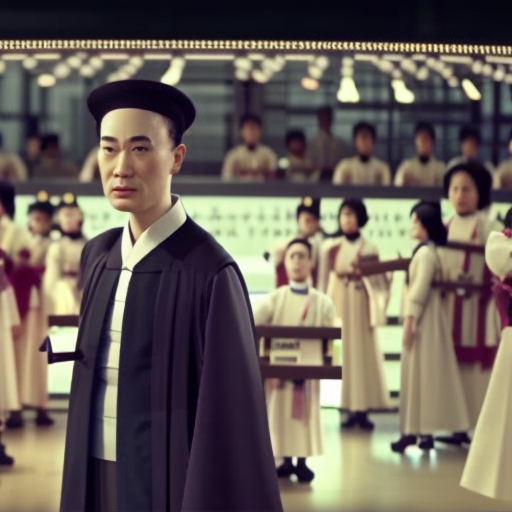Introducing AI courses as part of China’s compulsory education syllabus a matter of time: observers
Introducing AI courses as part of China's compulsory education ... Global Times


Sustainable Development Goals (SDGs) and the Integration of AI into Education
Introduction
One of the favorite classes for Cheng Ning (anonymity) is the weekly information technology class on which she gets to experience painting and playing jigsaws with computers. This would be the first lessons to get the idea of artificial intelligence (AI) for the nine-year-old.
Cheng Ning, her classmates and peers from East China’s Zhejiang Province were given more exposure to AI-related content as the province is one of the leading ones to explore integrating AI into classes of primary and middle schools in China. Now, Guangzhou, the capital city of South China’s Guangdong became the latest province to do so.
The experiences of Zhejiang and Guangzhou in integrating AI into the education of young students are seen as pioneering solutions for how the country can nurture up-to-date AI talents. Concerns arise as a large number of entry-level jobs may be replaced by AI in the future, especially since the emergence of ChatGPT has created a stir, observers noted.
Pilot Projects
According to a recent notice from the Guangzhou provincial education authorities, the AI course will be included in the annual curriculum plan of compulsory syllabus starting from this September. The total class hours for AI will be arranged together with practical activities, information technology, and school-based courses.
Prior to taking in AI a part of the compulsory education across schools, Guangzhou has identified three districts, Tianhe district, Liwan district, and Huangpu district, as the city’s AI curriculum experimental areas and a total of 147 primary and secondary schools as the city’s AI curriculum experimental schools.
“I regarded the practices from Guangzhou and Zhejiang as part of pilot projects for the AI courses to be part of our compulsory education across the country in the future. It will much likely happen within five or ten years,” Li Zonghui, the vice president of the Institute of Cyber and Artificial Intelligence Rule of Law affiliated with the Nanjing University of Aeronautics and Astronautics, told the Global Times.
As early as 2017, the State Council issued the “New Generation of Artificial Intelligence Technology Development Plan,” proposing to widely carry out AI science popularization activities, implement national intelligent education projects, set up AI-related courses in primary and secondary schools, and gradually promote programming education.
In recent years, many regions, including Wuhan in Hubei Province, Nanshan district in Shenzhen, Xiangtan in Hunan Province have also released educational implementation plans to promote AI in primary and secondary schools, media reports said.
The introduction of AI into the classroom today is similar to the popularization of computers in schools in the early 1980s, some voices said. Those children who were taught with computers have become the backbone of the internet era. Likewise, 20 years later as AI is popularized, they are able to engage in AI-related work.
The specific plan for Guangzhou to introduce AI into the classroom has yet been seen but Zhejiang’s experience showed AI content in textbooks of students of the sixth grade of primary school and of students of high schools have taken quite a large proportion, Zhejiang Daily reported.
Innovation above anything
The introduction of AI into classes is widely seen as an inevitable choice to cope with the burgeoning development of the technology. However, will the move naturally nurture more competitive talents in the AI era and people who are not easily replaced by cutting-edge technology?
Even with Cheng Ning who has started to learn Lego and robot programming extra-curricular classes since kindergarten, her parents found that the kind of course is more about imitating others, rather than about innovation cultivation.
There is a dilemma about AI education, Xiong Bingqi, director of the 21st Century Education Research Institute in Beijing, told the Global Times.
He explained that if not including the AI as part of enrollment exams of high schools or colleges, the study won’t be given enough measure as it should have but if do bring the AI into exams, it will fall into exam-oriented education which deviates from the initial purpose of nurturing innovative talent.
AI is a combination of multiple other subjects and the basic logic behind a powerful AI is the capability to innovate and calculate, which means it would make no sense to give young students tests, Li noted.
Either Zhejiang experience or Guangzhou experience, the essential should nurture students’ capability to learn new things and hopefully it will offer a better solution about nurturing AI talents, observers said.
Xiong suggested that the solution would not only add a basic course of AI in primary and secondary schools but to reform the education mode of basic education, to get rid of the education mode that only attaches importance to “knowledge education,” and to explore the scientific education mode of “cultivating students’ comprehensive innovation.”
SDGs, Targets, and Indicators
1. Which SDGs are addressed or connected to the issues highlighted in the article?
- SDG 4: Quality Education
- SDG 8: Decent Work and Economic Growth
- SDG 9: Industry, Innovation, and Infrastructure
2. What specific targets under those SDGs can be identified based on the article’s content?
- SDG 4.4: By 2030, substantially increase the number of youth and adults who have relevant skills, including technical and vocational skills, for employment, decent jobs, and entrepreneurship.
- SDG 8.2: Achieve higher levels of economic productivity through diversification, technological upgrading, and innovation.
- SDG 9.5: Enhance scientific research, upgrade the technological capabilities of industrial sectors in all countries, in particular developing countries, including, by 2030, encouraging innovation and increasing the number of research and development workers per 1 million people and public and private research and development spending.
3. Are there any indicators mentioned or implied in the article that can be used to measure progress towards the identified targets?
- Number of students enrolled in AI-related courses in primary and secondary schools.
- Percentage of AI content included in textbooks for different grade levels.
- Number of districts and schools implementing AI curriculum experimental programs.
Table: SDGs, Targets, and Indicators
| SDGs | Targets | Indicators |
|---|---|---|
| SDG 4: Quality Education | 4.4: By 2030, substantially increase the number of youth and adults who have relevant skills, including technical and vocational skills, for employment, decent jobs, and entrepreneurship. | – Number of students enrolled in AI-related courses in primary and secondary schools. |
| SDG 8: Decent Work and Economic Growth | 8.2: Achieve higher levels of economic productivity through diversification, technological upgrading, and innovation. | – Number of districts and schools implementing AI curriculum experimental programs. |
| 9.5: Enhance scientific research, upgrade the technological capabilities of industrial sectors in all countries, in particular developing countries, including, by 2030, encouraging innovation and increasing the number of research and development workers per 1 million people and public and private research and development spending. | – Percentage of AI content included in textbooks for different grade levels. |
4. Detailed Explanations
The article highlights the integration of artificial intelligence (AI) into education, specifically in primary and secondary schools in China. This connects to several Sustainable Development Goals (SDGs) related to education, economic growth, and innovation.
Under SDG 4: Quality Education, the target 4.4 aims to increase the number of individuals with relevant skills for employment and entrepreneurship. By introducing AI-related courses in schools, the article addresses this target by providing students with skills in AI, preparing them for future job opportunities.
SDG 8: Decent Work and Economic Growth is also relevant as the integration of AI into education aligns with target 8.2, which focuses on economic productivity through innovation. By equipping students with AI knowledge and skills, they can contribute to technological advancements and innovation in the future.
Furthermore, SDG 9: Industry, Innovation, and Infrastructure is connected to the article’s content. Target 9.5 emphasizes the enhancement of scientific research and technological capabilities. The integration of AI into education promotes innovation and encourages research and development in the field.
The article mentions indicators that can be used to measure progress towards the identified targets. The number of students enrolled in AI-related courses in primary and secondary schools can indicate the extent of skills development in AI. Additionally, the percentage of AI content included in textbooks for different grade levels reflects the integration of AI into the curriculum. The number of districts and schools implementing AI curriculum experimental programs demonstrates the scale and reach of AI education initiatives.
Behold! This splendid article springs forth from the wellspring of knowledge, shaped by a wondrous proprietary AI technology that delved into a vast ocean of data, illuminating the path towards the Sustainable Development Goals. Remember that all rights are reserved by SDG Investors LLC, empowering us to champion progress together.
Source: globaltimes.cn

Join us, as fellow seekers of change, on a transformative journey at https://sdgtalks.ai/welcome, where you can become a member and actively contribute to shaping a brighter future.







